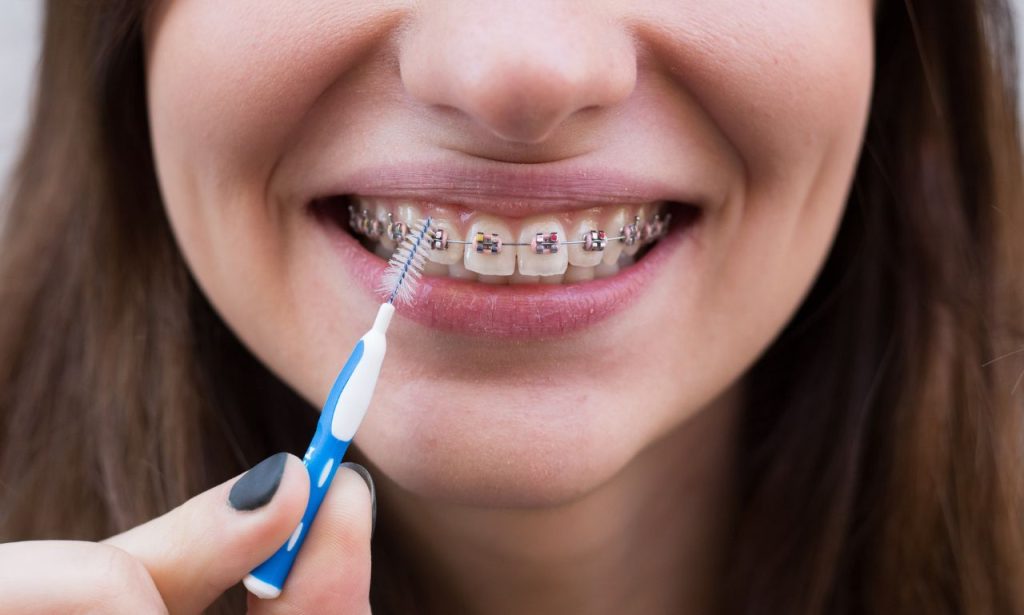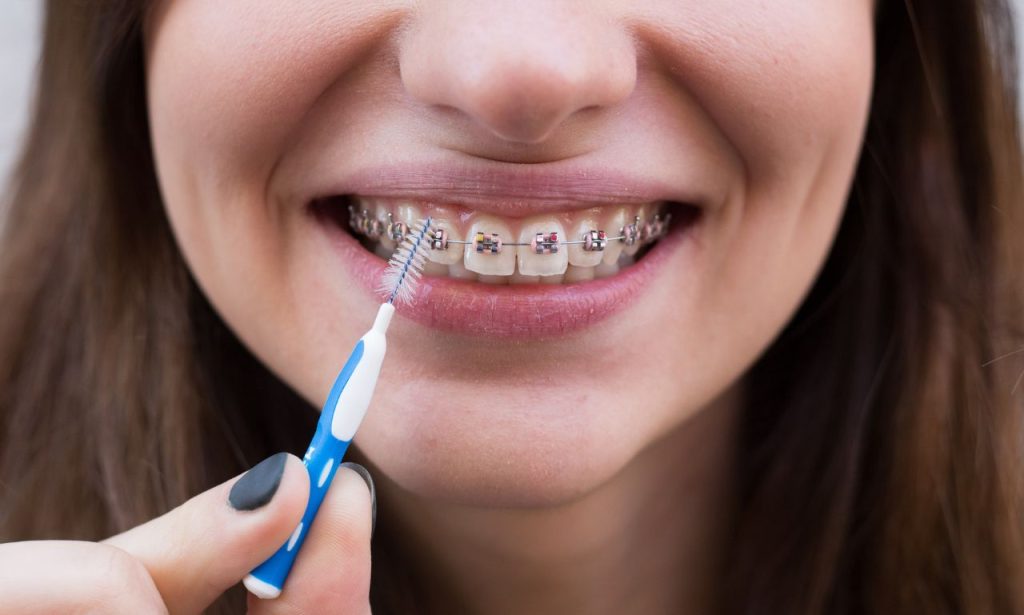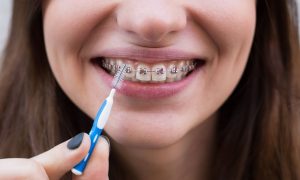You’ve embarked on a journey towards a straighter, healthier smile. You diligently brush, visit your orthodontist, and wear your elastics like a badge of commitment. But there’s a silent saboteur lurking in the shadows, threatening to derail your progress – the neglected act of flossing. You might think, “It’s just flossing, how much harm could it do?” The answer, unfortunately, is a lot. This isn’t about achieving pearly white perfection, it’s about safeguarding your oral health for a lifetime. So, let’s delve into the often-overlooked world of flossing with braces and understand why it’s a non-negotiable part of your orthodontic journey.
Consequences of Neglecting Flossing with Braces
Imagine this: you’re building your dream house (your future smile!), brick by painstaking brick (each tooth). Now, imagine ignoring the mortar holding those bricks together (that’s your gums!). That’s essentially what happens if you don’t floss with braces. You’re not just compromising the aesthetics, you’re jeopardizing the entire structure.
The Warning Signs You Shouldn’t Ignore

The consequences of neglecting to floss with braces aren’t a distant threat; they can manifest quickly and unpleasantly.
- Plaque’s Playground: Braces, those intricate metal marvels, unfortunately, create a haven for food particles. Brushing alone can’t reach those intricate nooks and crannies. This trapped food becomes an all-you-can-eat buffet for plaque, a sticky film of bacteria.
- Inflammation’s Red Alert: Your gums, constantly battling the plaque buildup, become inflamed. This inflammation, known as gingivitis, announces itself with telltale signs like redness, swelling, and even bleeding during brushing.
- Halitosis’s Unwelcome Arrival: Remember that trapped food fueling the plaque party? It decomposes, releasing unpleasant odors. This leads to halitosis, more commonly known as bad breath.
While these immediate effects might seem manageable, they’re merely the tip of the iceberg. Ignoring them paves the way for far more serious long-term consequences.
Long-Term Health Risks
The real danger of neglecting to floss with braces lies in the long-term health risks that can develop over time.
- Gum Disease’s Steady Advance: Gingivitis, if left unchecked, can progress into periodontitis. This advanced form of gum disease doesn’t just affect your gums; it attacks the bones and tissues supporting your teeth, potentially leading to tooth loss.
- Decalciumization’s Silent Threat: Remember the plaque feasting on trapped food? It produces acids as a byproduct. These acids weaken your tooth enamel, leading to decalcification. This appears as white spots on your teeth, even after your braces come off.
- Cavity Formation’s Sneaky Attack: The weakened enamel from decalcification becomes a prime target for cavities. These tiny holes in your teeth can lead to pain, infection, and even tooth extraction.
- Systemic Health Complications: Emerging research suggests a link between gum disease and other health problems like heart disease, stroke, and diabetes. While more research is needed, the potential connection underscores the importance of maintaining good oral health.
The takeaway? What happens if you don’t floss with braces goes far beyond just a few food particles stuck in your teeth. It’s a slippery slope towards a cascade of oral health problems that can impact your overall well-being.
Importance of Flossing During Orthodontic Treatment
Think of flossing with braces not as an optional extra, but as a fundamental pillar of your orthodontic treatment. Here’s why it’s so crucial:
Prevention of Plaque Buildup
Plaque is public enemy number one when it comes to oral health. Flossing acts as your primary defense mechanism, physically removing plaque from those hard-to-reach areas where your toothbrush can’t reach.
Reduction of Bad Breath
Remember that unpleasant odor we talked about? Flossing eliminates the source – the decomposing food particles trapped between your teeth and braces. This translates to fresher breath and increased confidence.
Avoidance of Gum Disease
By keeping plaque at bay, flossing helps prevent gingivitis and its more serious counterpart, periodontitis. This protects the health of your gums, ensuring they can support your teeth throughout your orthodontic treatment and beyond.
Prevention of Cavities and Permanent Stains
Flossing removes the acid-producing bacteria responsible for enamel erosion and cavity formation. This helps maintain the integrity of your tooth enamel, preventing unsightly white spots and cavities.
Effective Flossing Techniques
Flossing with braces might seem like a daunting task, but with the right techniques and tools, it becomes a manageable part of your routine.
Using Traditional Floss
- Measure and Thread: Tear off a piece of waxed floss (about 18 inches long) and thread it carefully between the wire and your teeth.
- C-Shape and Glide: Form a “C” shape around each tooth, gently gliding the floss up and down against the tooth surface.
- Don’t Force It: Be gentle! Forcing the floss can damage your gums and braces.
Utilizing Floss Threaders: Threading the Needle for Success
Floss threaders are small, flexible tools that help you thread floss under your archwire.
- Thread and Pull: Thread a piece of floss through the eye of the threader.
- Guide and Floss: Gently insert the threader under the archwire and pull it through to the other side. Use the floss as you would traditional floss, gently cleaning around each tooth.
Employing Water Flossers
Water flossers, also known as oral irrigators, use a pressurized stream of water to dislodge food particles and plaque.
- Fill and Choose: Fill the reservoir with water and choose a comfortable pressure setting.
- Angle and Glide: Aim the nozzle at a 90-degree angle to your gum line and trace along your gum line, pausing briefly between each tooth.
Remember, consistency is key. Aim to floss at least once a day, ideally before bedtime, to remove any food particles accumulated throughout the day.
Complementary Dental Care Practices

While flossing is crucial, it’s not a solo act. Here are some complementary practices to maximize your oral hygiene routine:
Effective Brushing Techniques
- Soft Bristles, Gentle Pressure: Choose a soft-bristled toothbrush and use gentle, circular motions to clean each tooth surface.
- Target the Brackets: Angle your brush to clean above and below the brackets, ensuring you reach all those hidden crevices.
Use of Mouthwash
- Fluoride Rinse: Opt for a fluoride mouthwash to strengthen tooth enamel and prevent cavities.
- Antibacterial Rinse: Consider an antibacterial mouthwash to further reduce plaque and bacteria in your mouth.
Conclusion
The question of what happens if you don’t floss with braces has a clear answer: you’re putting your oral health at risk. Flossing, while seemingly mundane, is a powerful tool in your quest for a healthy, radiant smile. It’s an investment in your future, ensuring that your orthodontic journey leads to a lifetime of confident smiles. So, embrace the floss, master the techniques, and make it an unskipable part of your daily routine. Your smile will thank you for it.
ALSO READ: What to Expect After Ketamine Treatment for Depression
FAQs
Toothpicks can help dislodge larger food particles, but they can’t effectively remove plaque and bacteria like floss. They can also be abrasive and damage your gums if used incorrectly.
Waxed floss is generally recommended for braces as it glides more easily between teeth and brackets without shredding.
It’s recommended to see your dentist for regular cleanings and checkups every 3-6 months during orthodontic treatment.




